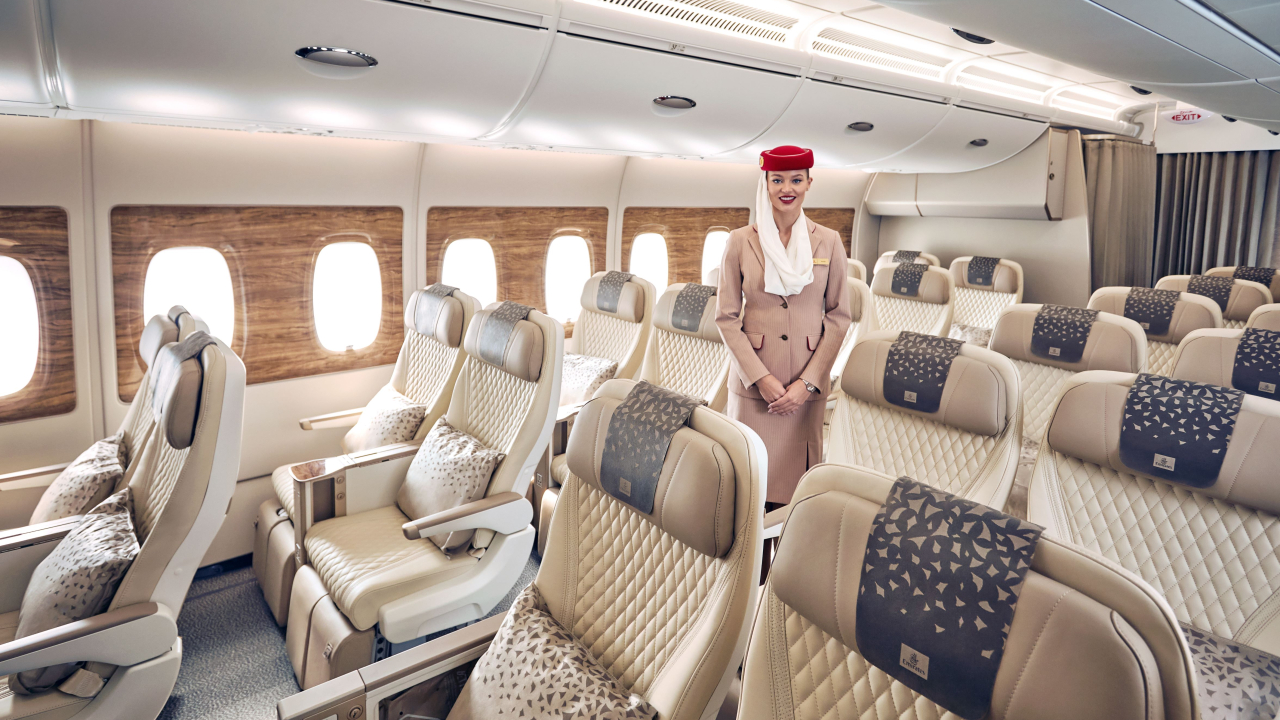Getting the green flight

Airlines worldwide are responding to the challenge with a variety of measures as they seek to reassure the public that their emissions are small in comparison with other sectors and that they are fighting to keep their emissions growth in check.
Of course, many environmental measures undertaken by airlines contain a degree of self-interest: they not only lessen the companies’ impact on the planet, but also improve efficiency and thus the bottom line. Ulterior motives notwithstanding, however, there is no doubt that carriers today are very aware of green issues and have a genuine interest in reducing emissions and waste.
One major avenue of research in recent years has been the hunt for sustainable fuels. With global oil production generally believed to have peaked, the search for alternative fuels has become increasingly important.
Bio-fuels have attracted considerable interest, but work on this new sector had no sooner started to accelerate when environmental groups began to express concerns that many of the crops being grown for fuel, by supplanting food crops and using scarce water resources, were beginning to cause real problems for communities in developing nations.
One possible solution being touted is the exploitation of a tropical plant, jatropha curcas , whose seedpods yield substantial amounts of an oil that is compatible with jet engines.
Already used for bio-diesel in the Philippines and Brazil, jatropha oil shows considerable promise. It can grow in the poorest of soils and does not displace food crops. India has set aside no less than 100 million acres to cultivate the plant, with the declared aim of using jatropha oil to meet 20% of its diesel consumption by 2011.
In September 2008, Gulf Air, together with eight other major airlines, Boeing and Honeywell UOP (a refining technology developer) established a group to accelerate the development and commercialisation of sustainable new aviation fuels.
This Sustainable Aviation Fuel Users Group is being backed by the Worldwide Fund for Nature and the Natural Resources Defense Council. The Group’s aim is to enable commercial use of renewable fuel sources that can reduce greenhouse gas emissions while also reducing the airline sector’s exposure to the price fluctuations of the oil markets. Jatropha oil costs slightly more than $40 a barrel – at the time of writing around 35% less than a barrel of crude oil and hugely less than the oil prices reached in summer 2008.
Last December one of the group’s members, Air New Zealand, successfully flight-tested a 50-50 mix of jatropha oil and Jet A1 in a Rolls-Royce RB-211 of one of its Boeing 747s and plans to use the new fuel for 10% of its requirements by 2013.
Together, the nine airlines that form the Group account for more than 15% of commercial jet fuel use. Any sustainable bio-fuel, they say, must perform at least as well as kerosene-based fuel but have superior environmental characteristics.
“Gulf Air has always been a pioneering airline and this agreement underlines our commitment to actually tackling climate change through the introduction of clean and green technologies,” said Gulf Air’s outgoing CEO, Björn Näf, earlier this year.
“Airlines that have introduced next-generation sustainability programmes have already seen substantial cost savings while efficiently managing their carbon footprint,” adds Gulf Air’s chief strategy officer, Tero Taskila. The airline has committed itself to sue bio-fuels when they are proven to be completely sustainable.
However, a report in May from Friends of the Earth dismissed jatropha, saying that the experience of farmers in Swaziland was that the crop required more water resources than anticipated and did not provide them with sufficient income. Expect more on this – and perhaps a switch to algae-based bio-fuel.
Airlines throughout the Middle East that travel to Europe are meanwhile bracing themselves for the next phase of the European Union’s carbon emission trading scheme that starts in 2012 and which levies charges on the emissions of airlines in EU airspace.
Intercontinental carriers have protested that they face a competitive disadvantage as the levy will be charged from a flight’s point of origin – Muscat, for example – even though most of the sector is outside the EU’s jurisdiction. Airlines will be allocated an allowance of credits, but will have to purchase more if they exceed the limits set by the EU.
“We don’t approve of this scheme but are having to comply with it because penalties for non-compliance are draconian, to put it mildly,” says Linden Coppell, Etihad’s manager, environmental affairs. Etihad prefers IATA’s approach of cutting emissions through use of new technology, better operating techniques and other measures.
“We have to go for an approach that’s the same for everyone in the industry; we need a global approach.” She accepts that the problem will be finding someone to administer this, but the International Civil Aviation Organization (ICAO) is one possibility.
Etihad has formed an alliance with Abu Dhabi’s Masdar Initiative, which is searching for solutions to major environmental issues such as climate change. It is working with experts on the Masdar City project – designed to be the world’s first zero-waste, zero-carbon emissions city – to improve the energy efficiency and waste management of its own HQ.
In neighbouring Dubai, Emirates Airline believes the greatest environmental difference it can make is through the selection and operation of its aircraft, according to chairman and chief executive, Sheikh Ahmed bin Saeed Al-Maktoum.
Its young fleet already betters competitors’ in fuel burn and this will improve further as more Airbus A380s come on-line.
Sheikh Ahmed makes the point, however, that Emirates’ environmental and conservation activities began long before these topics became fashionable.
They began with the Dubai Desert Conservation Reserve (DDCR), co-developed with the Dubai government and the first conservation area in the UAE. The DDCR is home to several protected species, such as the scimitar-horned oryx, and contains the Al Maha resort and spa, a pioneering environmental development in the region. Two similar conservation resorts – Wolgan Valley in Australia and Cap Ternay in the Seychelles – are due to open soon.
Elsewhere in the region, other carriers are exploring every avenue as they become more environmentally-conscious. Middle East Airlines is currently building an eco-friendly training centre that will make use of solar power and be as energy efficient as possible, says Captain Ousama Balaa, head of technical – not easy when it will contain several simulators, which are heavy consumers of electricity.
Elsewhere on the ground, he estimates that colleagues print only 10-15% of e-mails and documents compared to a decade ago. The airline also has a rapid, regular turnover of ground vehicles for the latest, most fuel-efficient versions. MEA is also taking an increasingly rigorous approach to flying more efficiently, both by reducing onboard weight (going as far as slimming down the in-flight magazine) and by estimating more accurately the quantities of fuel and luggage being carried.
Turkish Airlines, meanwhile, is also investing in younger aircraft to minimise fuel burn and is backing up the new equipment with more efficient flight-planning and execution of flight plans. Pilots and other staff are also being actively trained in fuel conservation measures.
With environmental pressures only likely to grow, taking the green route is likely to become just as important as finding the most fuel-efficient route between airports in years to come.
Global warming has become a major battleground between aviation and environmentalists. Neither side can even agree on the scale of the problem. Airline industry representative body IATA accepts that airliner emissions contribute to 2% of current global CO² emissions and that this figure is likely to rise to 3% by 2050.
It notes, however, that even if all air travel stopped tomorrow, this 2% reduction in emissions would be at the cost of the global economy grinding to a halt. International tourism, for example, on which many communities and nations depend for income, would be devastated. It also argues that 80% of aviation emissions relate to flights of more than 1,500km, for which there is no alternative transport solution.
Environmentalists argue that airline CO² emissions are already 20% higher than previous estimates and that the growth in aviation will more than offset any CO² efficiency savings that the industry can achieve.
They also argue that measures such as bio-fuels and carbon-offsetting are being used as smokescreens by the industry and that only limiting the growth of airlines will ease the situation. If not, it believes aviation’s CO² emissions will constitute 5-6% of the global total by 2050 – around double the industry’s estimate.
Stay up to date
Subscribe to the free Times Aerospace newsletter and receive the latest content every week. We'll never share your email address.

